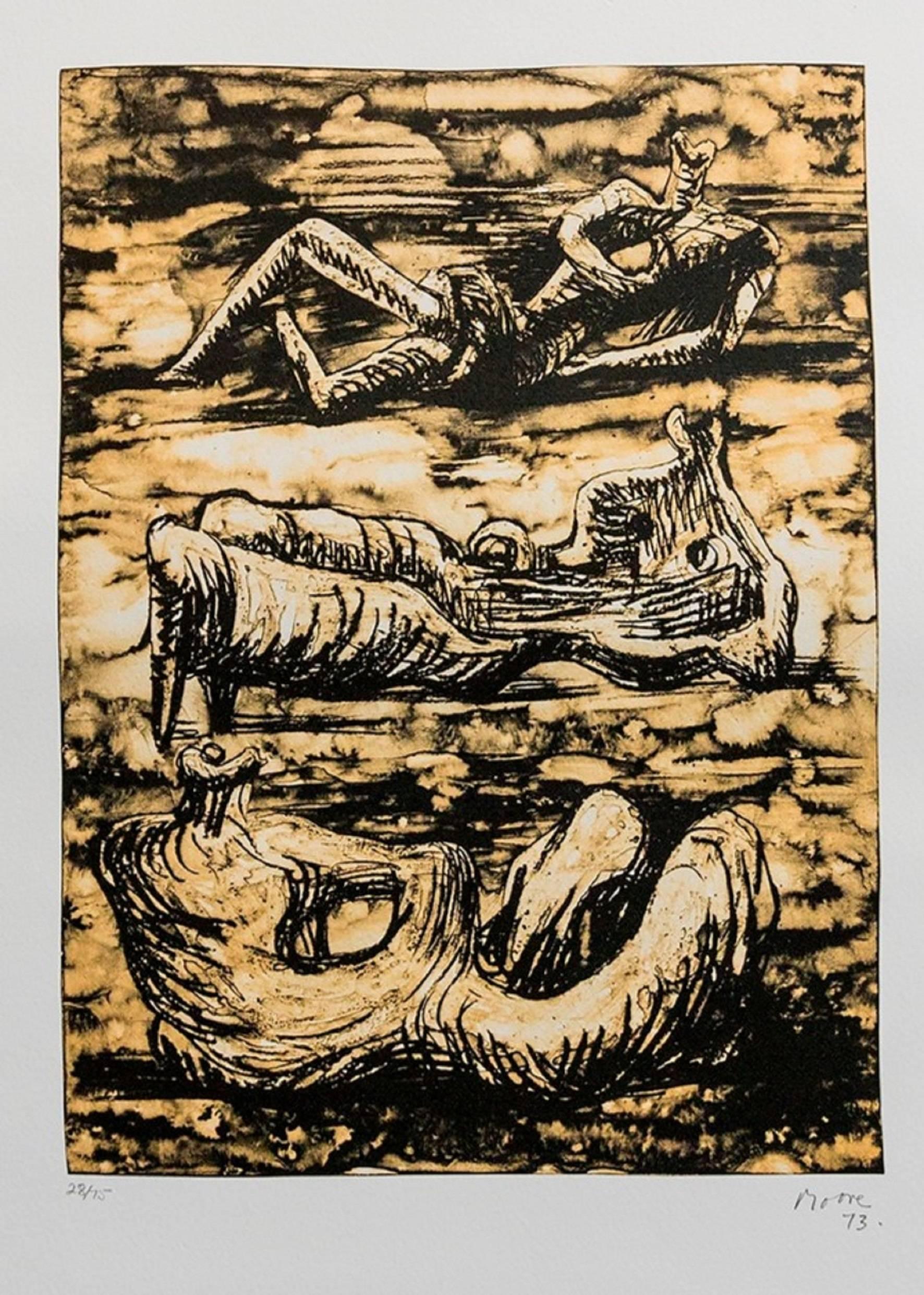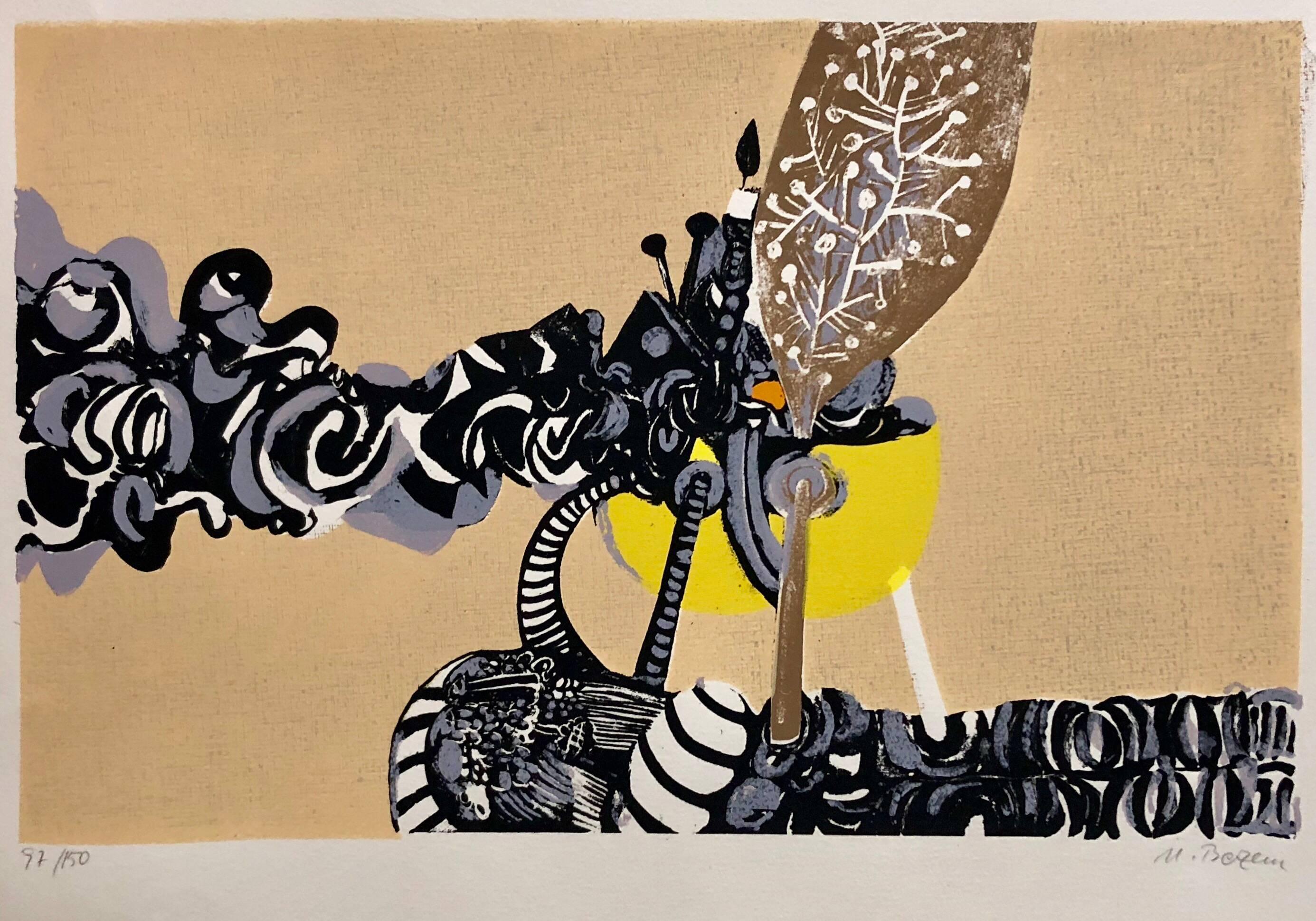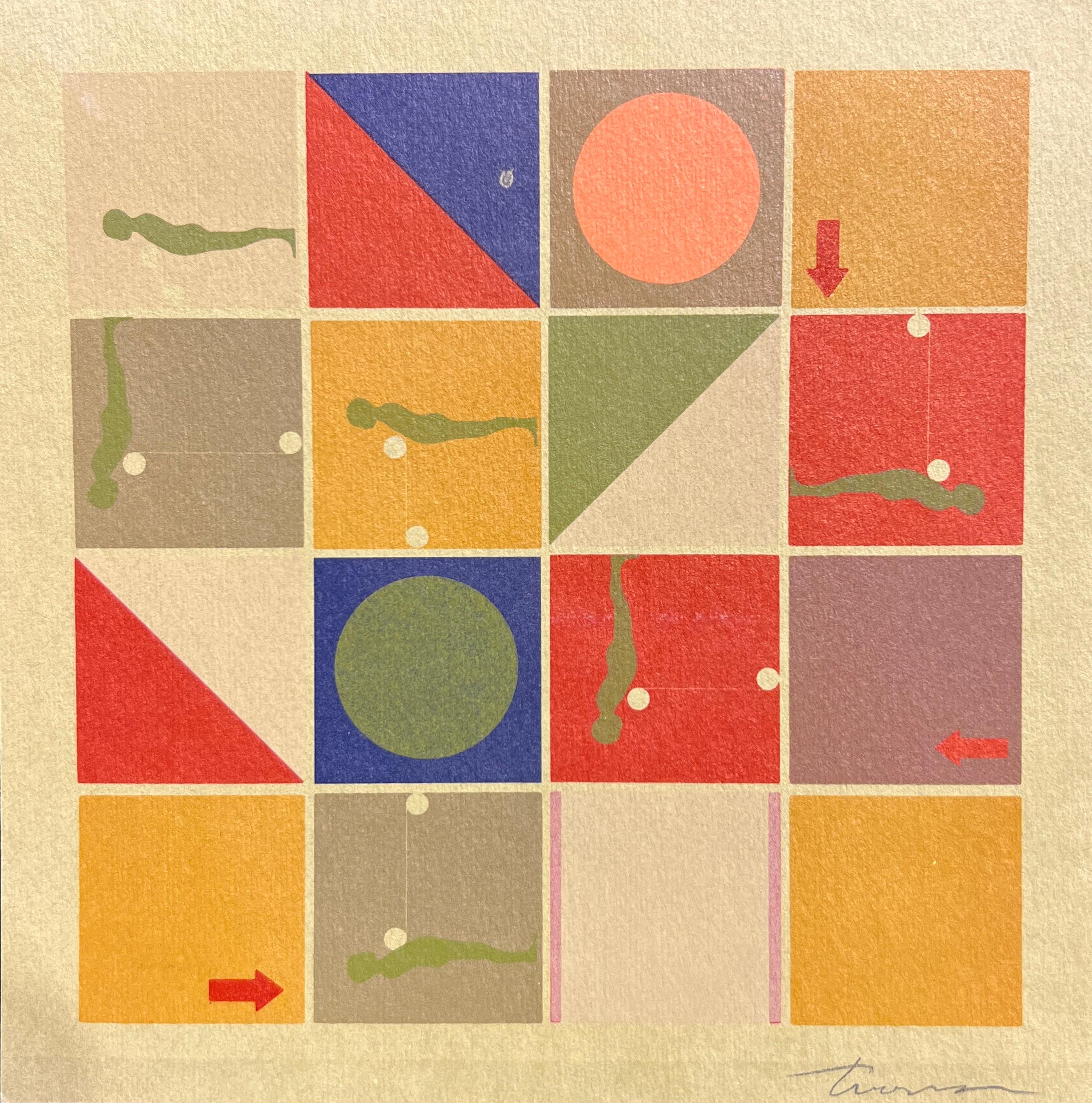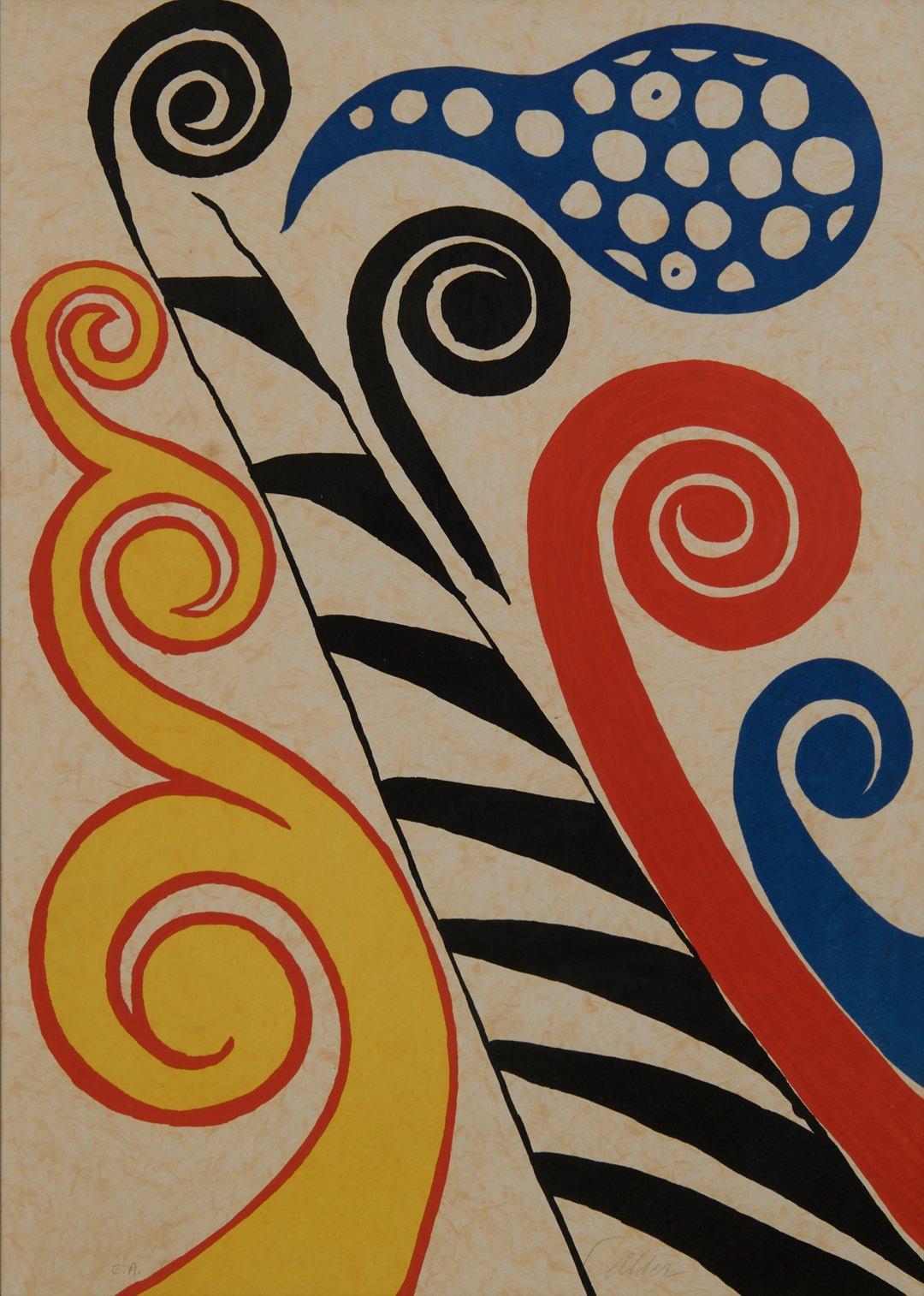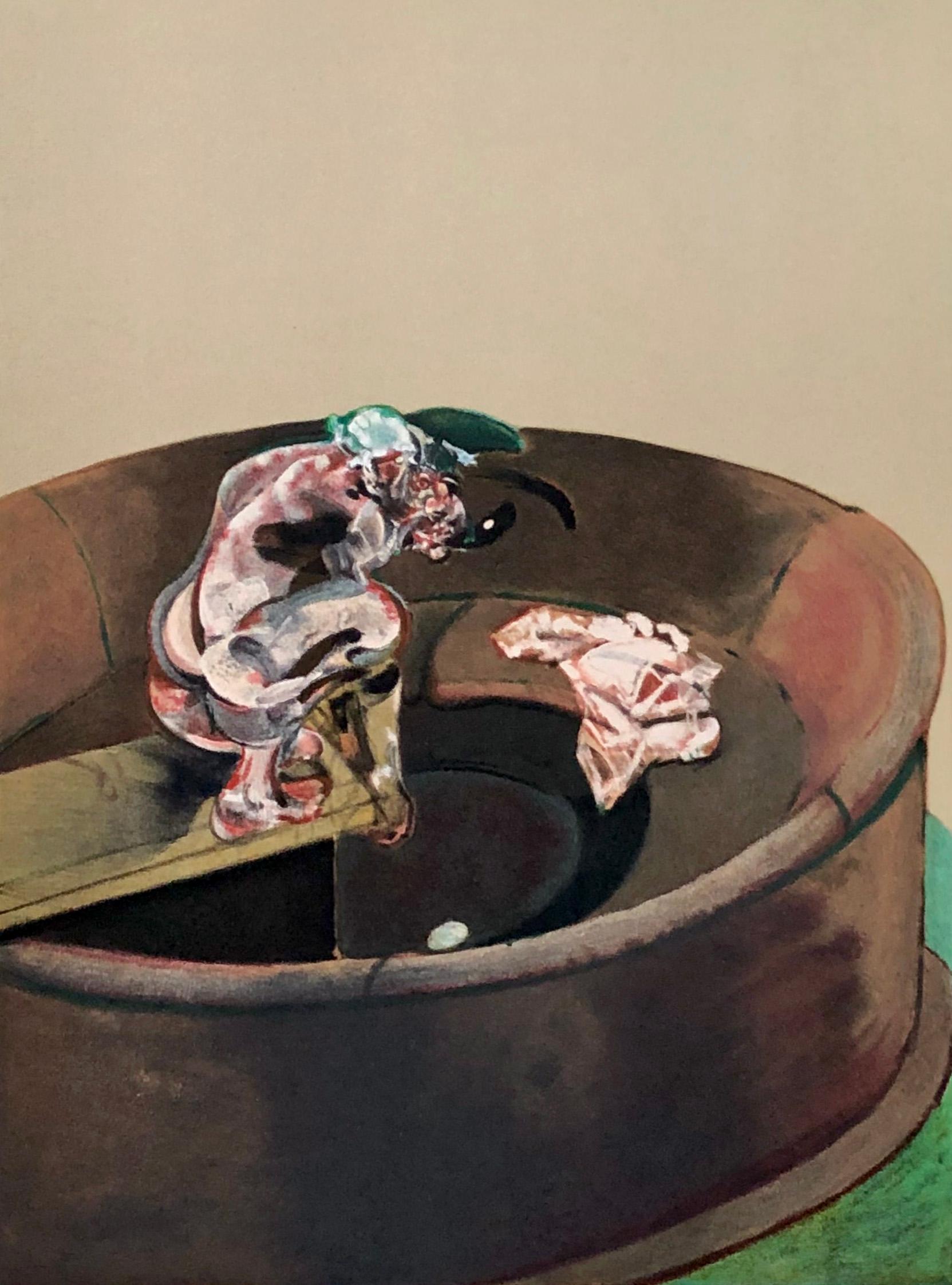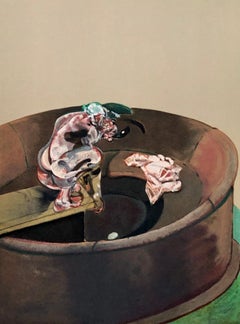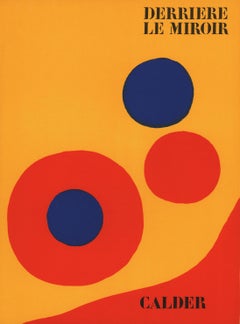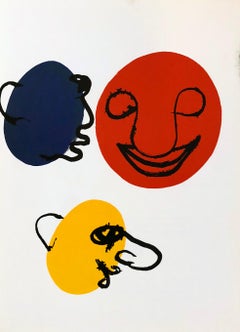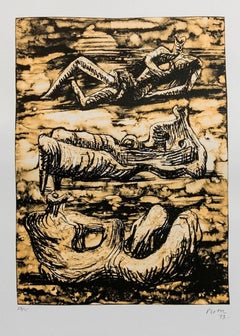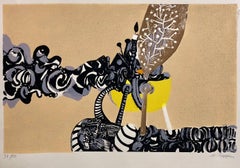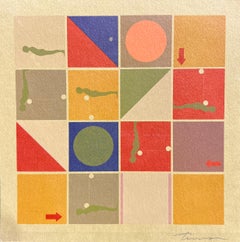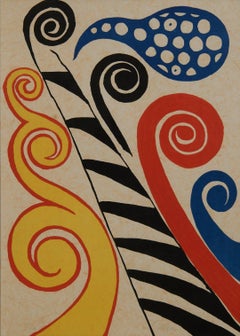Items Similar to 1960's Joan Miro lithograph (from Derrière le miroir)
Want more images or videos?
Request additional images or videos from the seller
1 of 6
1960's Joan Miro lithograph (from Derrière le miroir)c.1964
c.1964
About the Item
1960s Joan Miró lithograohic cover from Derrière le miroir:
Lithographic cover in colors; 11 x 15 inches (folding out to 15 x 22 inches). Circa 1964.
Very good overall vintage condition.
Unsigned from an edition of unknown.
Cover from Derrière le miroir.
Derrière le miroir:
In October 1945 the French art dealer Aimé Maeght opens his art gallery at 13 Rue de Téhéran in Paris. His beginning coincides with the end of Second World War and the return of a number of exiled artists back to France.
The publication was created in October 1946 (n°1) and published without interruption until 1982 (n°253). Its original articles and illustrations (mainly original color lithographs by the gallery artists) who were famous at the time.
The lithographic publication covered only the artists exhibited by Maeght gallery either through personal or group exhibitions. Among them were, Pierre Alechinsky, Francis Bacon, Alexander Calder, Marc Chagall, Eduardo Chillida, Alberto Giacometti, Vassily Kandinsky, Ellsworth Kelly, Fernand Léger, Henri Matisse, Joan Miró, Saul Steinberg and Antoni Tapies.
- Creation Year:c.1964
- Dimensions:Height: 15 in (38.1 cm)Width: 11 in (27.94 cm)
- Medium:
- Movement & Style:
- After:Joan Miró (1893 - 1983, Catalan)
- Period:
- Condition:
- Gallery Location:NEW YORK, NY
- Reference Number:1stDibs: LU35439402992
About the Seller
5.0
Vetted Professional Seller
Every seller passes strict standards for authenticity and reliability
Established in 2014
1stDibs seller since 2016
4,485 sales on 1stDibs
Typical response time: <1 hour
- ShippingRetrieving quote...Shipping from: New York, NY
- Return Policy
Authenticity Guarantee
In the unlikely event there’s an issue with an item’s authenticity, contact us within 1 year for a full refund. DetailsMoney-Back Guarantee
If your item is not as described, is damaged in transit, or does not arrive, contact us within 7 days for a full refund. Details24-Hour Cancellation
You have a 24-hour grace period in which to reconsider your purchase, with no questions asked.Vetted Professional Sellers
Our world-class sellers must adhere to strict standards for service and quality, maintaining the integrity of our listings.Price-Match Guarantee
If you find that a seller listed the same item for a lower price elsewhere, we’ll match it.Trusted Global Delivery
Our best-in-class carrier network provides specialized shipping options worldwide, including custom delivery.More From This Seller
View All1960s Francis Bacon lithograph (from derrière le miroir)
By (after) Francis Bacon
Located in NEW YORK, NY
1960s Francis Bacon lithograph from Derrière le miroir:
Well-suited for matting & framing, this original 1960's print is derived from Bacon's ...
Category
1960s Modern Abstract Prints
Materials
Lithograph
$520 Sale Price
20% Off
Alexander Calder Lithographic cover Derrière le miroir 1973
By Alexander Calder
Located in NEW YORK, NY
Alexander Calder Lithographic cover: Derrière le miroir 1973:
Lithographic cover sheet; 15 x 11 inches.
Very good overall vintage condition.
Unsigned from an edition of unknown.
Por...
Category
1970s Modern Figurative Prints
Materials
Lithograph
Alexander Calder Lithographic cover Derrière le miroir 1973
By Alexander Calder
Located in NEW YORK, NY
Alexander Calder Lithographic cover: Derrière le miroir 1973:
Lithographic cover sheet; 15 x 11 inches.
Very good overall vintage condition.
Unsigned from an edition of unknown.
Por...
Category
1970s Modern Figurative Prints
Materials
Lithograph
$240 Sale Price
20% Off
Alexander Calder lithograph Derrière le Miroir (Calder prints)
By Alexander Calder
Located in NEW YORK, NY
Alexander Calder Lithograph c. 1971 from Derrière le miroir:
Lithograph in colors; 15 x 11 inches.
Very good overall vintage condition.
Unsigned from an edition of unknown.
From: Derrière le miroir Published Paris c. 1971. Printed in France.
Derrière le miroir:
In October 1945 the French art dealer Aimé Maeght opens his art gallery at 13 Rue de Téhéran in Paris. His beginning coincides with the end of Second World War and the return of a number of exiled artists back to France.
The publication was created in October 1946 (n°1) and published without interruption until 1982 (n°253). Its original articles and illustrations (mainly original color lithographs by the gallery artists) who were famous at the time.
The lithographic publication covered only the artists exhibited by Maeght gallery either through personal or group exhibitions. Among them were, Pierre Alechinsky, Francis Bacon, Alexander Calder, Marc Chagall, Eduardo Chillida, Alberto Giacometti, Vassily Kandinsky, Ellsworth Kelly, Fernand Léger, Henri Matisse, Joan Miró, Saul Steinberg and Antoni Tapies.
Alexander Calder was an American artist best known for his invention of the kinetic sculptures known as mobiles. Calder also produced a variety of two-dimensional artworks including lithographs, paintings, and tapestries as seen in his Butterfly (1970). “My whole theory about art is the disparity that exists between form, masses, and movement,” the artist once said. Born on August 22, 1898 in Lawnton, PA, Calder turned to art in the 1920s, studying drawing and painting under George Luks and Boardman Robinson at the Art Students League in New York. Calder moved to Paris to continue his studies in 1926, where he was introduced to the European avant-garde through performances of his Cirque Calder (1926–1931). “I was very fond of the spatial relations,” he said of his interest in the circus. “The whole thing of the—the vast space—I’ve always loved it.” With these performances, along with his wire sculptures, Calder attracted the attention of such notable figures as Marcel Duchamp, Jean Arp, and Fernand Léger. Notably, it was his friend Duchamp that coined the term mobile—a pun in French meaning both “motion” and “motive”—during a visit to Calder’s Paris studio in 1931. His earliest mobiles moved by motors, but Calder soon abandoned these mechanics and designed pieces that moved by air currents or human interaction. Over the course of seven decades, along with his mobiles, he also produced paintings, monumental outdoor sculptures, works on paper, domestic objects, and jewelry. The artist lived in both Roxbury, CT, and Saché, France, before his death on November 11, 1976 in New York, NY. Today, his works are held in the collections of The Museum of Modern Art in New York, the National Gallery of Art in Washington, D.C., the Whitney Museum of American Art, New York, the Art Institute of Chicago, and the Tate Gallery in London.
Related Categories
Calder prints. Mid Century Modern. 1970s. Alexander Calder and Contemporary Art. Mid Century Modern. Calder clowns.
Category
1970s Modern Figurative Prints
Materials
Lithograph
1960s Francis Bacon lithograph (from Bacon derrière le miroir)
By (after) Francis Bacon
Located in NEW YORK, NY
1960s Francis Bacon lithograph from Derrière le miroir:
Well-suited for matting & framing, this original 1960's print is derived from Bacon's ...
Category
1960s Modern Figurative Prints
Materials
Lithograph
Vintage Bob Dylan Souvenir Poster (Milton Glaser Bob Dylan 1960s)
By Milton Glaser
Located in NEW YORK, NY
Original 1967 Milton Glaser Fold Out Poster for Bob Dylan's Greatest Hits.
Offset lithograph printed in colors 33 x 22 in (83.82 x 55.88 cm)
Fold lines as issued; very good vinta...
Category
1960s Pop Art Figurative Prints
Materials
Lithograph
$227 Sale Price
30% Off
You May Also Like
Henry Moore 1973 Lithograph edition 28/75 Sculpture Figures Reclining Nudes
By Henry Moore
Located in Surfside, FL
Henry Spencer Moore (1898 – 1986)
Moore was born in Castleford, the son of a coal miner. He became well-known through his carved marble and larger-scale abstract cast bronze sculptures, and was instrumental in introducing a particular form of modernism to the United Kingdom later endowing the Henry Moore Foundation, which continues to support education and promotion of the arts.
After the Great War, Moore received an ex-serviceman's grant to continue his education and in 1919 he became a student at the Leeds School of Art (now Leeds College of Art), which set up a sculpture studio especially for him. At the college, he met Barbara Hepworth, a fellow student who would also become a well-known British sculptor, and began a friendship and gentle professional rivalry that lasted for many years. In Leeds, Moore also had access to the modernist works in the collection of Sir Michael Sadler, the University Vice-Chancellor, which had a pronounced effect on his development. In 1921, Moore won a scholarship to study at the Royal College of Art in London, along with Hepworth and other Yorkshire contemporaries. While in London, Moore extended his knowledge of primitive art and sculpture, studying the ethnographic collections at the Victoria and Albert Museum and the British Museum.
Moore's familiarity with primitivism and the influence of sculptors such as Constantin Brâncuși, Jacob Epstein, Henri Gaudier-Brzeska and Frank Dobson led him to the method of direct carving, in which imperfections in the material and marks left by tools became part of the finished sculpture. After Moore married, the couple moved to a studio in Hampstead at 11a Parkhill Road NW3, joining a small colony of avant-garde artists who were taking root there. Shortly afterward, Hepworth and her second husband Ben Nicholson moved into a studio around the corner from Moore, while Naum Gabo, Roland Penrose, Cecil Stephenson and the art critic Herbert Read also lived in the area (Read referred to the area as "a nest of gentle artists"). This led to a rapid cross-fertilization of ideas that Read would publicise, helping to raise Moore's public profile. The area was also a stopping-off point for many refugee artists, architects and designers from continental Europe en route to America—some of whom would later commission works from Moore.
In 1932, after six year's teaching at the Royal College, Moore took up a post as the Head of the Department of Sculpture at the Chelsea School of Art. Artistically, Moore, Hepworth and other members of The Seven and Five Society would develop steadily more abstract work, partly influenced by their frequent trips to Paris and their contact with leading progressive artists, notably Pablo Picasso, Georges Braque, Jean Arp and Alberto Giacometti. Moore flirted with Surrealism, joining Paul Nash's modern art movement "Unit One", in 1933. In 1934, Moore visited Spain; he visited the cave of Altamira (which he described as the "Royal Academy of Cave Painting"), Madrid, Toledo and Pamplona. Moore made his first visit to America when a retrospective exhibition of his work opened at the Museum of Modern Art in New York City.[28]
Before the war, Moore had been approached by educator Henry Morris, who was trying to reform education with his concept of the Village College. Morris had engaged Walter Gropius as the architect for his second village college at Impington near Cambridge, and he wanted Moore to design a major public sculpture for the site.
In the 1950s, Moore began to receive increasingly significant commissions. He exhibited Reclining Figure: Festival at the Festival of Britain in 1951, and in 1958 produced a large marble reclining figure for the UNESCO building in Paris. With many more public works of art, the scale of Moore's sculptures grew significantly and he started to employ an increasing number of assistants to work with him at Much Hadham, including Anthony Caro and Richard Wentworth.
Moore produced at least three significant examples of architectural sculpture during his career. In 1928, despite his own self-described extreme reservations, he accepted his first public commission for West Wind for the London Underground Building at 55 Broadway in London, joining the company of Jacob Epstein and Eric Gill..At an introductory speech in New York City for an exhibition of one of the finest modernist sculptors, Alberto Giacometti, Sartre spoke of The beginning and the end of history...
Category
1970s Modern Abstract Prints
Materials
Lithograph
Rare Israeli Surrealist Judaica Abstract Lithograph Naftali Bezem
By Naftali Bezem
Located in Surfside, FL
Fine lithograph on deckle edged French Arches paper. Pencil signed and numbered from edition of 150.
A Surrealist Judaica scene of a bearded man (Rabbi) in a boat with Shabbat candlesticks. with blindstamp from Editions Empreinte in Paris, France. (They published, Jean Michel Folon, Sempe, Raoul Ubac, Raymond Savignac, Cesar, Bengt Lindstrom , Paul Aizpiri and many other modern masters.
Naftali Bezem (Hebrew: נפתלי בזם; born November 27, 1924) is an Israeli painter, muralist, and sculptor.
Bezem was born in Essen, Germany, in 1924. His early adolescence was spent under Nazi oppression, in constant fear for the safety of his parents, who perished in the Holocaust in the Polish Auschwitz concentration camp. Naftali emigrated to Mandate Palestine in 1939, at the age of fourteen with a Youth Aliyah group.
From 1943 to 1946, he studied art at the Bezalel Academy of Art and Design in Jerusalem with Israeli painter Mordecai Ardon. He then spent three years studying in Paris.His most famous public works include a wall relief at Yad Vashem in Jerusalem and the ceiling mural in the main reception room at the President's Residence, Jerusalem.In 1957, Bezem was a co-recipient of the Dizengoff Prize for Painting.
Group Exhibitions
Orit Art Gallery, Tel Aviv
Artists: Yosef Zaritsky, Marcel Janco, Lea Nikel, Robert Baser, Bezem, Michael Druks,
Israeli Painting (Watercolors and Gouache)
Artists:
Pinchas Abramovich, Bezem, Naftali Nachum Gutman, Haim Gliksberg, Mordechai Levanon, Avigdor Stematsky, Avshalom Okashi, Yehiel Krize...
Category
20th Century Modern Figurative Prints
Materials
Lithograph
Study/Falling Man (Series I)
By Ernest Tino Trova
Located in Missouri, MO
Study/Falling Man (Series I), 1967
By. Ernest Tino Trova (American, 1927-2009)
Black Frame, Green Background
Signed in Pencil Lower Right
Unframed: 6 x 6 inches
With Frame: 8.75 x 8....
Category
20th Century American Modern Abstract Prints
Materials
Lithograph
Price Upon Request
Fiesta, c. 1973, red, yellow & blue figurative abstract lithograph
By Alexander Calder
Located in Beachwood, OH
Alexander Calder (American, 1898-1976)
Fiesta, c. 1973
Lithograph in colors
Signed lower right
Edition: E. A.
20 x 28 inches
35.5 x 37.75 inches, framed
One of America's best known ...
Category
1970s Modern Abstract Prints
Materials
Lithograph
La Mélodie Acide - 1 (Surrealism, Colorful, Modern, ~26% OFF LIMITED TIME ONLY)
By Joan Miró
Located in Kansas City, MO
Joan Miró
La Mélodie Acide - 1
Color lithograph
Year: 1980
Edition: 1500
Artist Dry Stamp lower right,
Annotated "H.C" (hors commerce) in pencil lower left
Size: 8.2 × 6.6 on 12.9 ...
Category
1980s Modern Abstract Prints
Materials
Lithograph
La Perruch et la Sirene
By (after) Henri Matisse
Located in Washington, DC
Artist: Henri Matisse (after)
Title: La Perruch et la Sirene
Portfolio: The Last Works of Henri Matisse
Medium: Lithograph
Date: 1958
Edition: 2000
Frame Siz...
Category
1950s Modern Abstract Prints
Materials
Lithograph
